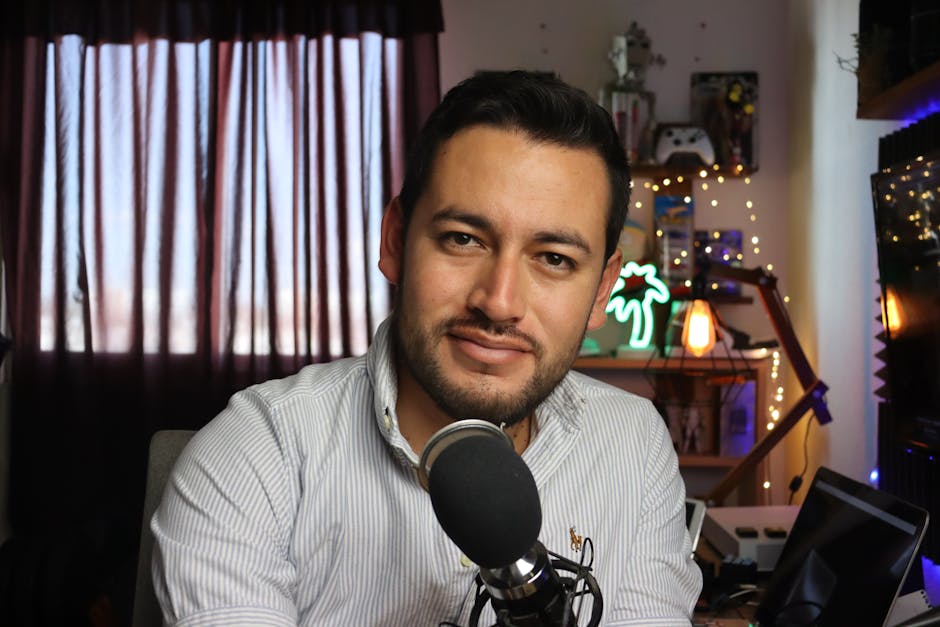My Review of Paid Promotion Services for Podcasters (are They Worth It?).
As podcasters, we pour our hearts, time, and often our savings into creating compelling audio content. But getting that content heard? That’s where the real uphill battle begins. The podcasting landscape is more crowded than ever, and simply publishing an episode no longer guarantees an audience. This reality led me down a rabbit hole many of you might be exploring right now: paid promotion services. I’ve personally experimented with a range of these services, from targeted social media ads to specialized podcast PR agencies, all with one burning question in mind: are they worth the investment?
This isn’t a theoretical discussion. This is my hands-on account, a deep dive into what I tried, what worked, what didn’t, and whether the money spent translated into meaningful growth for my show. If you’re wondering whether to open your wallet for podcast promotion, stick around. My review might just save you some cash – or convince you where to spend it wisely.
Diving Into the World of Podcast Promotion Services: My Starting Point
Like many podcasters, I started with the basics: sharing on social media, telling friends, and hoping for organic discovery. While these methods brought in a trickle of listeners, the growth curve was frustratingly flat. My listenership plateaued, and despite consistent effort on content quality, the numbers weren’t moving. That’s when the allure of “guaranteed listeners” and “rapid growth” promises from various promotion services started to catch my eye.
My initial motivation wasn’t just vanity metrics. I believed in my show’s message and wanted to reach more people who could benefit from it. I saw other podcasts seemingly explode in popularity and wondered if a strategic financial push was the missing ingredient. So, with a modest but determined budget, I decided to treat this as an experiment, meticulously tracking every dollar spent and every listener gained. My goal was to understand if these services offered a sustainable path to growth or merely a temporary, expensive bump.
Sifting Through the Options: My Experience with Different Service Types
The world of paid podcast promotion is vast and, frankly, a bit overwhelming. It ranges from automated ad placements to highly personalized PR campaigns. I decided to sample a few distinct categories to get a comprehensive understanding.
Testing the Waters with Automated Ad Networks and Platforms
My first foray was into services that promise to place your podcast in front of relevant audiences through various ad networks. These often involve programmatic advertising, where your show’s trailer or short audio ads are inserted into other podcasts, or display ads on podcast-related websites and apps. I tried platforms that claimed to target listeners based on genre and listening habits.
What I found: The good news? I definitely saw an increase in downloads. The bad news? The quality of these downloads was questionable. Many seemed to be single listens, with very few converting into subscribers or consistent listeners. The cost per download could vary wildly, and it was often hard to ascertain if these were genuinely interested new fans or just fleeting clicks. It felt a bit like throwing spaghetti at a wall – some stuck, but much of it slid off.
Engaging with Influencer Marketing & Cross-Promotion Agencies
Next, I explored services that connect podcasters with influencers or other podcasts for cross-promotional opportunities. This often involves paying for guest spots on larger shows, sponsored segments, or shout-outs from relevant social media personalities. The idea here is to tap into an already engaged audience that aligns with your niche.
What I found: This approach yielded better quality listeners. When an influencer genuinely recommended my show, or I appeared as a guest on a well-matched podcast, the new listeners were more likely to stick around. However, securing these spots through agencies could be quite expensive, and the success heavily depended on the influencer’s authenticity and audience overlap. It required more upfront vetting and wasn’t always scalable for rapid growth.
Navigating Podcast PR and Media Outreach Firms
Finally, I invested in a specialized podcast PR firm. Their promise was to get my show featured in articles, podcasts, and other media outlets, generating organic buzz and driving listeners from trusted sources. This is typically the most expensive option, focusing on building credibility and long-term visibility rather than immediate download spikes.
What I found: This was a mixed bag. When a PR firm successfully landed a feature in a prominent publication or an interview on a widely-listened-to show, the results were excellent – highly engaged, loyal listeners. However, these successes were not guaranteed, and the process could be slow. There were also instances where the promised placements didn’t materialize, or the media outlet wasn’t as impactful as initially pitched. It’s a high-risk, high-reward strategy that demands significant patience and a substantial budget.
The Promise vs. The Reality: What Paid Services *Claim* to Deliver (and What Actually Happened)
Every paid promotion service comes with a compelling pitch. They talk about “reaching millions,” “targeted audiences,” and “guaranteed growth.” My experience taught me that while these claims aren’t always false, they often paint an incomplete picture.
Dissecting the “Reach” vs. “Engagement” Metric
Many services boast about the sheer number of people they can “reach.” And yes, in terms of impressions or ad plays, the numbers can be astronomical. But reach doesn’t equal engagement. I saw my download numbers jump, but my subscriber count, average listening duration, and social media engagement didn’t always follow suit. It’s easy to buy a download, much harder to buy a loyal listener.
The reality was that many of the initial downloads from automated ad services were fleeting. Listeners might click, listen for a minute, and then move on. This inflated my download statistics without genuinely growing my community. For me, engagement – listeners returning for new episodes, interacting on social media, leaving reviews – is the true measure of a podcast’s health, not just raw download counts.
The Quality of Listeners: Quantity Over Quality?
This was perhaps the most critical distinction I uncovered. While some services brought in a high volume of listeners, their quality was often low. They weren’t necessarily people who would become long-term fans of my specific content. They might have been broadly interested in the genre but not deeply aligned with my niche or tone. This led to a high bounce rate and low retention.
In contrast, the listeners gained through more targeted methods, like cross-promotions with highly relevant shows, were fewer in number but significantly higher in quality. They were already pre-qualified, having enjoyed similar content, and were much more likely to subscribe and engage. This reinforced the idea that who you reach is often more important than how many.
Crunching the Numbers: Was My Investment Worth the Listener Growth?
This is where the rubber meets the road. I meticulously tracked my spending and compared it against my podcast analytics, focusing on key metrics beyond just downloads.
Calculating the True Cost Per Subscriber
Initially, I looked at cost per download. This metric, while easy to track, proved misleading. A $0.50 per download might sound good, but if 90% of those downloads were single listens that didn’t convert, my true cost per *subscriber* was much higher – sometimes $50 or more for a truly engaged listener. This made some of the cheaper, high-volume services look far less appealing.
For more targeted approaches like influencer marketing, the cost per *initial* listener was higher, but the cost per *subscriber* or *engaged listener* was significantly lower. This is because those listeners were already warmed up and more likely to stick around. Understanding the difference between a download and a subscriber is paramount when evaluating worth.
The Elusive ROI: Short-Term Gains vs. Long-Term Value
The return on investment (ROI) for podcast promotion isn’t always immediate or purely financial. For me, “worth” also included building a community, increasing brand awareness, and potentially opening doors for sponsorships or collaborations down the line. Short-




Post Comment